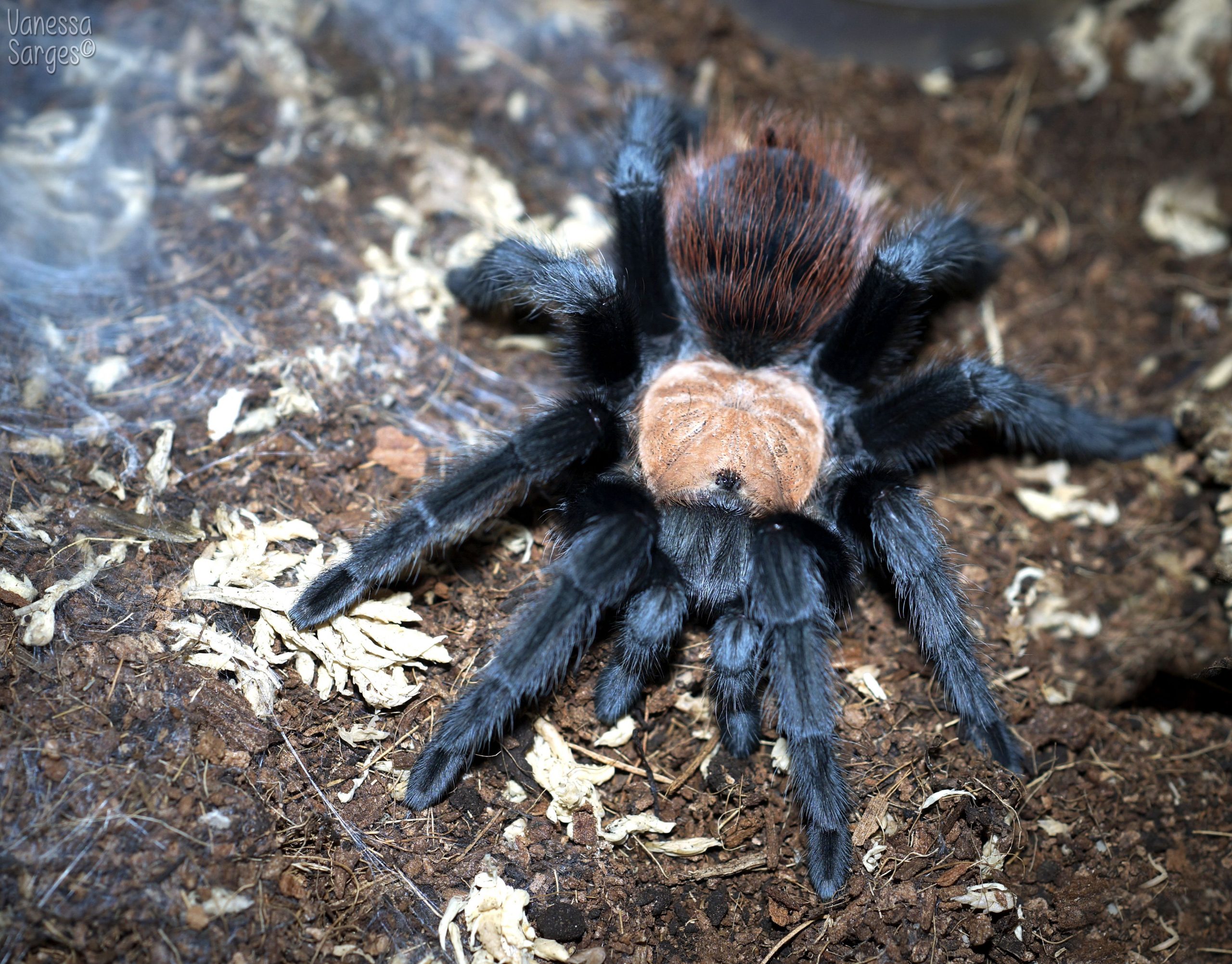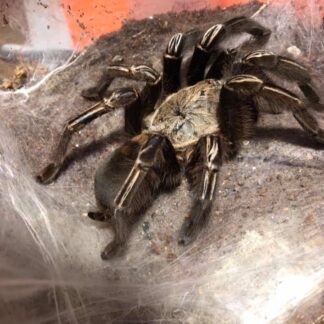Description
I might have mentioned this before, but Brachypelma stands out as my preferred genus of tarantulas. These fascinating creatures have numerous appealing qualities. They boast impressive longevity, stunning colors, and, for the most part, exhibit a docile demeanor. Among my favorites is Brachypelma albiceps, which distinguishes itself with its unique coloration. This captivating tarantula is native to Mexico, specifically found in southern Mexico State, Morelos State, northern and eastern Guerrero State, and western Puebla State. It’s readily available as a captive-bred specimen
In my experience, Brachypelma albiceps proves to be exceptionally calm and less nervous compared to other members of the genus. During feeding, they don’t hastily retreat into hiding and rarely flick their hairs. Interestingly, they also seldom use their hides, making them ideal for display. These tarantulas exhibit a slightly faster growth rate than their counterparts and have a commendable lifespan, with females living up to 18-20 years and males up to 4-5 years.
I highly recommend adding this species to any collection. Having such a beautiful tarantula with a friendly disposition and a long lifespan is a winning combination.
Brachypelma albiceps, also known as the Mexican Rolden Red Rump, is a captivating species sought after by both beginners and experienced keepers. Renowned for its vibrant colors and docile nature, this scrubland/desert tarantula from Guerrero, Mexico, is extremely hardy. Females are known to live beyond 30 years.
Here are some key details about Brachypelma albiceps:
– **Origin:** New World, native to Guerrero, Mexico.
– **Difficulty:** Beginner
– **Type:** Terrestrial
– **Adult Size:** 4.25-5.75″
– **Growth Speed:** Slow
– **Longevity:** Males 6+ years, females 20-40 years
– **Temperament:** Docile yet skittish; may flee or flick urticating hairs if agitated.
– **Bite Potency:** Mild
– **Urticating Hairs:** Yes
– **Ideal Temperature:** 70 to 75°
– **Humidity:** Low to Medium
Fun Fact: Brachypelma albiceps is the only Brachypelma species with a bright yellow-gold carapace.
For optimal care, provide good ventilation and ensure safety in the enclosure. The substrate should be organic and free of chemicals, with options like cocofiber, vermiculite, peat moss, or potting soil. Larger spiders need a shallow water dish, and feeding frequency varies with size. Spiderlings may burrow, and adults may adopt hides or cork tubes.
Witnessing the transformation of spiderlings from unassuming brown to colorful adults is a rewarding experience. Sexual dimorphism becomes apparent as females grow more stocky, while males remain lankier with tibial hooks. Brachypelma albiceps, discovered in 1903 and formerly known as Brachypelmides ruhnaui, is distinguished by its black velvet color, golden-yellow carapace, and absence of orange leg banding. The species was reclassified into the Brachypelma genus in August 2018.




